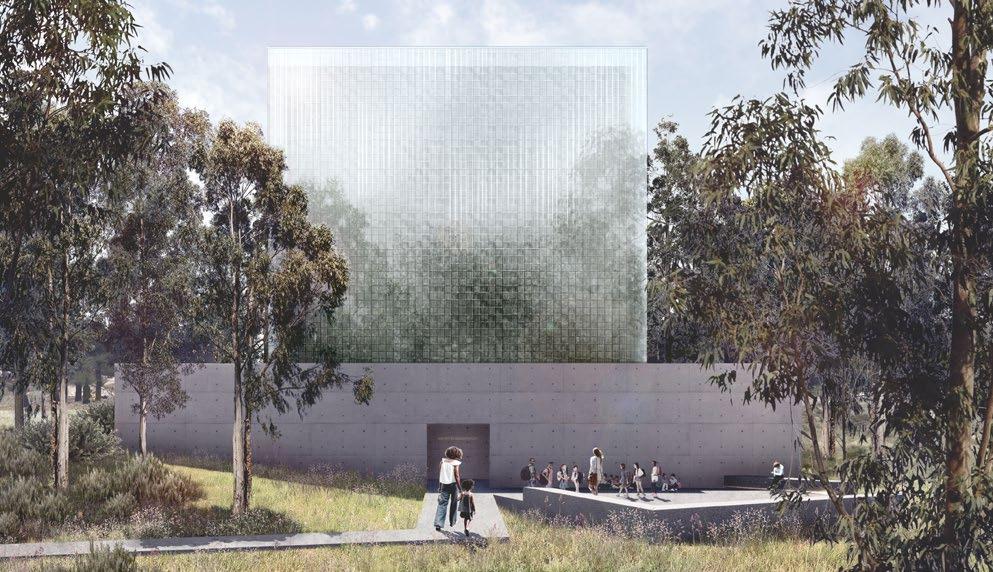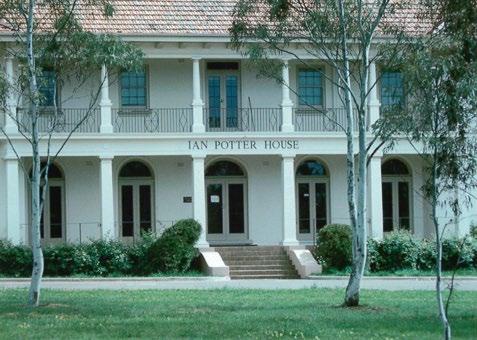
4 minute read
Chief Executive Officer’s Report
“…grantees rate the Foundation significantly higher compared to 2015 for more than a dozen individual measures, including aspects of its impact, understanding, relationships, and processes… grantees provide more positive ratings for the Foundation’s impact on their organisations and all aspects of their interactions with IPF compared to 2015…” — 2021 CEP Survey of Grantees Summary of Key Findings
The role of philanthropy is to be optimistic, to ‘lift its gaze’ and think of what might be, what could be possible. It is particularly satisfying this year to report on several positive developments that occurred despite the challenges faced by so many of us over a very tough twelve months.
In early 2021, The Ian Potter Foundation once again engaged The Centre for Effective Philanthropy (CEP) to conduct a confidential survey of our grantees and declined applicants to obtain their feedback and views on all aspects of our approach to grant making. A similar survey was conducted in 2015 and provided very useful information at the time for me as an incoming CEO. The Foundation is committed to conducting this survey every five years to ensure we continue to learn from the experience of our grantees and of our declined applicants, using the information gathered through this process to inform all aspects of our interaction with the Australian charitable sector.
The information provided by the CEP survey in 2015 informed many of the strategies implemented in the subsequent years including our own internal system changes, the size and composition of our program management team, our narrowed program areas and focused funding guidelines, the size and duration of approved grants, the nature of our programmatic interaction with grantees, elements of our communications strategy, as well as the provision of non-monetary support of our grantees. Many survey respondents underscored the important role that the Foundation plays in their sectors and philanthropy more broadly, particularly by addressing gaps in government funding and using the Foundation’s reputation to draw attention to crucial issue areas.
Understandably, declined applicant feedback was more mixed compared to grantee feedback, however, declined applicants rated the Foundation significantly higher compared to 2015 for the responsiveness of staff and helpfulness of the selection process.
I would like to thank all grantees and declined applicants that provided such detailed feedback. The time and effort taken to complete the CEP survey provides valuable insights that assist the Foundation’s effort to continually improve our approach to supporting Australian charitable organisations. It is through our grantees that we hope to achieve our mission and so understanding what it is we do well and where we can improve further is invaluable to the entire management team and to the Board.
In the spirit of improved and effective philanthropy, I continue to seek opportunities for the Foundation to collaborate and co-fund alongside other trusts and foundations. In that context, a group of philanthropic foundations – including the Sidney Myer Fund, Gandel Philanthropy, Lord Mayor’s Charitable Foundation, Vincent Fairfax Family Foundation and The Ian Potter Foundation – recognised that the pandemic would have serious consequences for the not-for-profit sector for many years to come, particularly in the arts and social sectors.
In late 2020, this group of funders collaborated on a research project to pinpoint what the arts and social sectors required to enable them to rebound, innovate, and improve their

resilience. Recommendations from this research focused on the need for greater collaboration and innovation within the arts and social sectors.
To translate the research recommendations into proposals that might benefit Australian charitable organisations, the philanthropic group launched an open call funding round for arts and community not-for-profits in October 2021, offering a pool of $1.5 million for a few innovative and potentially impactful collaborations. I will report further on this project next year.
This year, we also saw the launch of Watertrust Australia Ltd, with the mission to improve how water and catchment policy decisions are made in Australia.
Watertrust Australia Ltd is an independent organisation fully funded by philanthropy. It was born out of a shared vision of The Ian Potter Foundation, The Myer Foundation, Colonial Foundation, The Besen Family Foundation, The Miller Foundation and nine other co-funding partners with the belief that the role of philanthropy is to provide risk capital for social innovation.
After jointly funding a major study in 2017 to better understand the issues, The Ian Potter Foundation and The Myer Foundation were joined by this amazing group of funders who have collectively committed in excess of $32 million over ten years to ensure the organisation’s long-term independence and viability.
This is a wonderful example of evidence-led collaborative philanthropy forging a plan to invest and develop a new model for entrenched systemic issues, in this instance, sustainable management of Australia’s freshwater resource for current and future generations. Working to improve our own processes, working collaboratively with others, and working with our grantees tends to make one optimistic, as we coalesce around a shared vision of a fair, healthy, sustainable, and vibrant Australia.

The newly refurbished Ian Pottter House at the Australian Academy of Science in Canberra will be home for Watertrust Australia. The Foundation awarded the Academy a $500,000 grant to repair and renovate Ian Potter House so it is fit for purpose. Image courtesy of The Australian Academy of Science.
Above: In FY21, a further $400,000 was granted to The Ian Potter National Conservatory project to assist the Australian National Botanic Garden to cover increased materials and safe work environment costs that have arisen as a result of COVID-19. Image courtesy of CHROFI architects.







